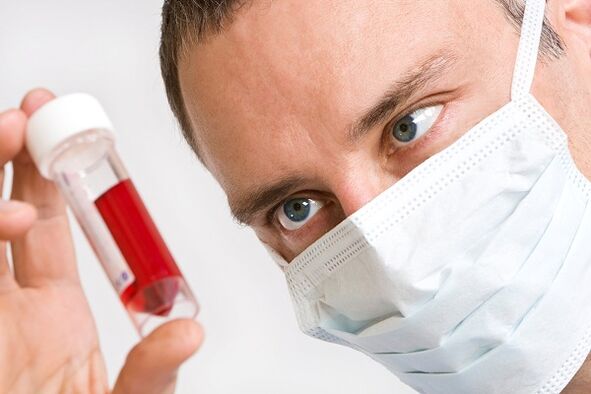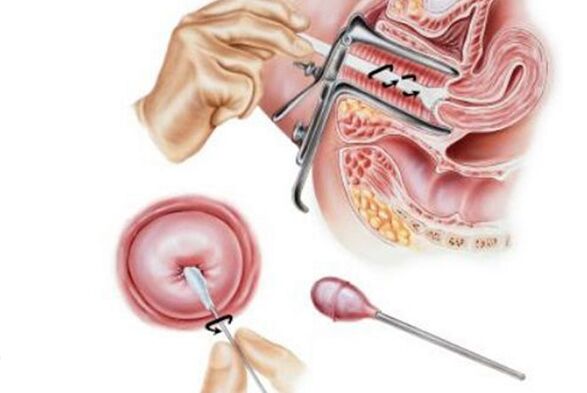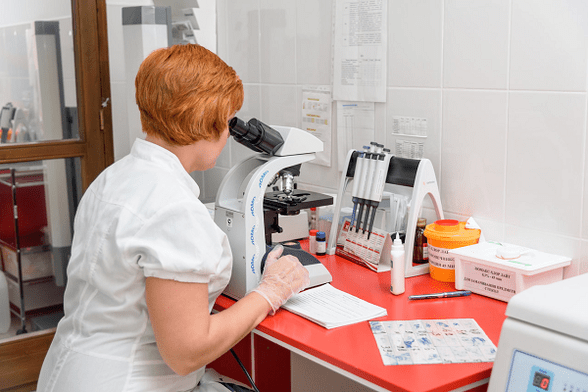If there is a need to pass an analysis to identify HPV, then there is nothing to worry about. A large number of procedures are completely painless, and some are quite acceptable to any patient. Consider the most common questions about test delivery.
What is HPV?
Human papillomavirus is a microorganism that contains the cell structure of DNA. When introduced into the human body, HPV DNA causes mutations, which lead to an irreversible process. A large number of the population are already carriers of the virus, but few people are aware of this, as the virus does not manifest itself in any way.
Once the body fails, the immune system weakens and growth appears in the body. For all formations on the skin, except moles and acne, HPV is the one that affects. If its growth is not treated immediately, then malignancy occurs and harmless warts can turn into cervical cancer in women and urethral cancer in men.
Why is the human papilloma virus dangerous?
When papillomas, genital warts or warts appear on the body, the average person is almost unable to distinguish them from each other, mistakenly counting them as something incapable of causing harm.
Not as simple as that - a small papilloma can grow to its size which will cause many difficulties - from aesthetic discomfort to the development of a cancerous tumor. More than 130 types of human papillomavirus are known and each manifests itself in a different way.

The most common of these are types 16 and 18, which provoke cancers of the mucous membranes, cervix, vagina, penis and other similar diseases. Because at first a person is unaware of the presence of the virus in the body, HPV gradually develops and after 5-10 years a person notices changes in his body in the form of growth.
Analysis for papilloma can be done at any clinic. After 40 years, more than half of the wounds became violent. Timely diagnosis gives a person a chance for a painless old age, which will not be overshadowed by cancer.
Why test for human papillomavirus?
To protect yourself from oncogenic diseases, you should identify potential threats to life and health in a timely manner. With many reasons for its spread, HPV is spread from person to person through close contact - hugging, kissing, having sex, using common hygiene products.
The virus takes root under the skin and damages healthy DNA structures, mutating throughout the body. When immunity fails, HPV appears on the skin in the form of warts, papillomas and similar rashes. Only screening can detect the virus at an early stage and prevent its further spread.
When is an HPV Test Scheduled?

When the first signs of the disease appear in the body, the doctor can see it even with a visual inspection. HPV tests are prescribed to understand where the virus came from in the body, identify its type and then eliminate it.
Despite assuming that not every infected person is capable of becoming a cancer patient, no one wants to tempt fate, which means having to do a test. If a woman is planning to get pregnant, she must be tested for HPV, as the virus will easily penetrate the baby. The father should also not be indifferent, as he may be a carrier of the papillomavirus virus.
Features passed analysis for HPV
It is believed that the detection of HPV before the age of 30 is not informative, as the disease extends far beyond the human eye. After 30, the first test is prescribed that can detect papillomavirus even at an early stage.
The less time has passed since the moment of infection, the more effective the next treatment. It is necessary to identify when normal cells begin to grow into cancer cells. The method for diagnosing human papillomavirus depends on several factors:
- Identification of the virus and the fact of its presence in the body
- Learn variety
- The value of the damage that occurred during the period in which the person did not seek medical help
- Provide high quality and effective treatment
Remember:the virus will not leave the host completely, as it is already interacting with the body’s DNA cells. HPV will remain calm until the immune defenses become weak.
What type of analysis needs to be done to detect HPV?
- Colposcopic examination. HPV testing in women is done with this method. It is designed to detect genital warts. It is prescribed for women to detect genital warts located in the cervical area.
- Cytology. A smear is taken, which contains epithelial cells, then the sample taken is examined under a microscope. If the cells are altered, then there is a risk of contracting HPV. There is a risk of incorrect results.
- Histology. This is in addition to cytology to exclude faults. A small amount of affected tissue is taken and the doctor assesses the difficulty of positioning through a microscope. With the help of histological examination, it is possible to determine the nature of its formation.
- PCR diagnostics. The most correct way with 98%accuracy. Sweep, urine, blood, or amniotic fluid are taken
If at least one examination indicates the presence of a virus, then the patient will be sent for additional analysis to ensure the accuracy of the results. If the result is found to be positive, then contaminated test material or a violation of generally accepted sampling techniques may be the cause.
Sometimes patients make incorrect preparations for analysis or choose the wrong time for a procedure-these factors can also lead to incorrect results.
Test rules
In addition to relying on the attending physician, the patient himself must follow the process of passing the analysis and know the basic process. Doctors are experts, but health belongs to the patient.
How are biomaterials taken?
Shots are taken with a soft brush, which looks like a brush. In free clinics, a Volkmann spoon is sometimes used - it’s a small spoon on a long stick. Such a brush is gently inserted into the canal, then removed with a rotational motion. The brush was placed in a sterile thermos and sent for further research.
How to prepare the procedure for women
2 days before the procedure, you can not live sexually, use soap with antibacterial effect, douche, use tampons. If the smear is taken from the cervix, then after the procedure for 3 weeks, you can not have sex, play sports, overheat, swim in public places and take medications that affect blood thinning.

How to prepare for the procedure for men
Sexual intercourse is not included, bathing for 2 days without detergent. Do not urinate before the procedure.
General supplies for the procedure
It is necessary to tell the doctor about all the medications that a person has taken in the last 2 months.
How is an HPV blood test taken?
Used for PCR diagnostics. From the fingers, sometimes from the veins, depending on the analysis of what the person is going to do. The slight tingling sensation from the injection is the maximum discomfort from the procedure. If the ducts in the elbow area are narrow, then the process of taking blood will be difficult, but the doctor will tell you how to expand the veins properly.
This procedure is performed on an empty stomach, you can not even drink water. It's a good idea to bring a chocolate bar with you. 3 days before donating blood, it is necessary to exclude from the diet all foods that cause allergic reactions.
How is Urine Tested?
It is better to treat the sterile jar itself. You can buy it at the pharmacy. Collect morning urine in a jar on an empty stomach. Then take it for inspection, preferably immediately, the maximum duration is 4 hours or the result will not happen. The method is not exactly like taking blood, but if it is not possible to donate blood, you should use this method.

How long does it take to test for HPV in women and men?
If a colposcopic examination occurs, then the result is immediately released. With cytological examination, the results will be ready only after a week. Histology is performed for 3 days, then you can get the test results in your hands. With PCR diagnostics, you can take a decision immediately or wait up to 2 days.
When and how often should you be tested for HPV?
Until the age of 30, only those with obvious signs of growth in their bodies are examined. Usually at this age, HPV is inactive and does not spread throughout the body.
From the age of 30 to 60 years, it is necessary to undergo an examination every 3 years. Immunity levels are declining, so signs of human papillomavirus should be detected in a timely manner.
After 60 years, usually no exams are done. If in the last two tests, the presence of the virus was not detected, then you need not worry. If there are manifestations, then you need to undergo treatment until the last 2 results are negative.
Costs and prices for HPV test delivery
If there is an acute illness or when the cancerous tumor ends, most screenings are free. They can be prescribed by an oncologist in attendance.
For a complete picture of the development of the virus, 2 methods are usually used to eliminate the possibility of false information.
Decoding the result
Decryption should be performed only by the attending physician. Patient intervention will not do any good. To understand what the result is, you must pay attention to the following words:
- reference value - HPV absent;
- positive result - oncogenic HPV strain detected;
- the result was negative - no manifestations of cancer were found, but it was possible to look for other types of HPV.
If the patient decides to take care of health and find out about the presence of human papillomavirus virus in his body, then one should use the above method. Timely diagnostics save millions of people and help find a calm and healthy life. Only after passing the test can prescribe quality treatment.
Sometimes patients are sent for testing without signs of external disease, and the procedure shows that there is HPV in the body. In this case, treatment will not last long. For this reason doctors recommend asking for help in a timely manner.















































































